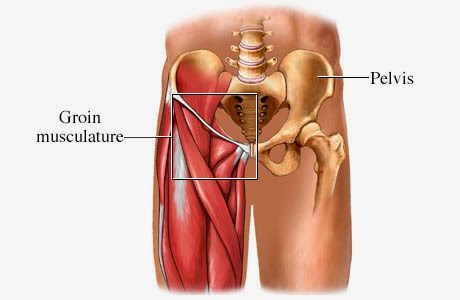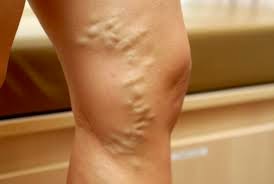back pain related with scoliosis
We often feel
back pain, however, we either don’t know or didn't realize the real
contributing factor or causes that lead to the back pain. One of the causes for
back pain associated with the scoliosis. Lets take around for the information
of the scoliosis….
Meaning:
The abnormality of the spinal curvature, defined by a lateral (side by side) curvature
of more than 10 degrees.
Degree of spinal curvature
may vary for each person, however curvature more than 90 degrees associated
with an increased risk of mortality and morbidity.
Sign and symptoms:
- Uneven musculature on one side of the spine
- Uneven level of shoulder, hip, knee
- A rib prominence or a prominent shoulder blade
Types of spinal curvature:
Scoliosis
curves are often described based on the direction and location of the curve.
Spinal
curvature divided into 2 types: C-shape or S-shape
Dextroscoliosis
describes a spinal curve to the right ("dextro" = right).
Levoscoliosis describes a spinal curve to the left
("levo" = left)
Terms that describes the location of
the curve:
Thoracic scoliosis is
curvature in the middle (thoracic) part of the spine. This is the most common
location for spinal curvature.
Lumbar scoliosis is
curvature in the lower (lumbar) portion of the spine.
Thoracolumbar scoliosis is
curvature that includes vertebrae in both the lower thoracic portion and the
upper lumbar portion of the spine.
1
C-shaped
curve described as thorocolumbar dextroscoliosis refers to a single curve that
spans the lower thoracic and upper lumbar vertebrae.
2
S-shaped
curve described as thoracic dextroscoliosis and lumbar levoscoliosis indicates
that there are two curves of which the upper curve is located in the thoracic
spine and leans to the right, and the bottom curve is in the lumbar spine and
leans to the left.
Types of scoliosis:
1) Congenital
curves
These are classified into failure of formation, failure
of segmentation and mixed groups. Generally, the worst curves occur with
unilateral defects in segmentation. Other factors include the type of anomaly,
site of anomaly and age of onset. Congenital scoliosis ranges from the trivial
to catastrophic depending on the capacity to progress.
2) Infantile
and juvenile idiopathic curves
Infantile and juvenile are terms used describe curves
that develop from ages 0-3 years and 4-10 years respectively. Arborization of
the bronchial tree and alveolar development continues to age 8 and at age 10
the thoracic volume is 50% of the adult expected. This division helps to
identify those children at higher risk of developing cardiopulmonary
complications. Children with early onset scoliosis can have a profound effect
on lung development that in turn has an impact on life expectancy.
3) Adolescent
idiopathic curves
The adolescent idiopathic type is the commonest seen in
clinical practice. They will often present the deformity as progressed to a
point where a family member notices shoulder, waist or back asymmetry.
4) Neuromuscular
curves
Now the most common neuromuscular cause of scoliosis is
cerebral palsy (CP). The more severe the CP, the greater the likelihood of
scoliosis appearing in childhood. Muscular dystrophies are included within this
group along with Duchenne, Beckers, spinal muscular atrophy and other rarer
varieties.
Treatment for scoliosis:
- Surgery: usually recommended by orthopedists for curves with a high likelihood of progression (greater than 45 - 50° of magnitude), curves that would be cosmetically unacceptable as an adult, curves in patients with spina bifida and cerebral palsy that interfere with sitting and care, and curves that affect physiological functions such as breathing. It is usually impossible to completely straighten a scoliotic spine, but in most cases, significant corrections are achieved.
- Postural correction: by changing the strategies of carrying load using both hands instead of 1 hand at the curvature side, by using cushion support during sitting, avoid handling object at only one dominant side only, and try to avoid prolonged static position of lateral lean position. Gait training may require if gait affected after prolonged scoliosis posture.
- Exercise: imbalance muscle corrected through the principles of strengthening and stretching exercise with combination of core stabilization. This is because the muscles at the back are essential when it comes for supporting the spinal column and maintaining proper shape of spines
- Scoliosis braces: Bracing is normally done when the patient has bone growth remaining and is, in general, implemented to hold the curve and prevent it from progressing to the point where surgery is recommended. Braces are sometimes prescribed for adults to relieve pain related to scoliosis
| scoliosis surgery |
| scoliosis braces |
Give yourself the opportunity to be healthy by giving us
chance to treat you…
Assess, analyze, achieve
further reading:
Daniel, R., Colin, N., & Jeremy, F. (2013). Scoliosis: A review. Symposium surgery and orthopaedics, 24(5), 197-203.



Here are something that can give you back pain relief and make you relax. You can also save money with us we bring coupons and deals to save your money.
ReplyDeletechirp wheel.
neck pain relief
back pain relief